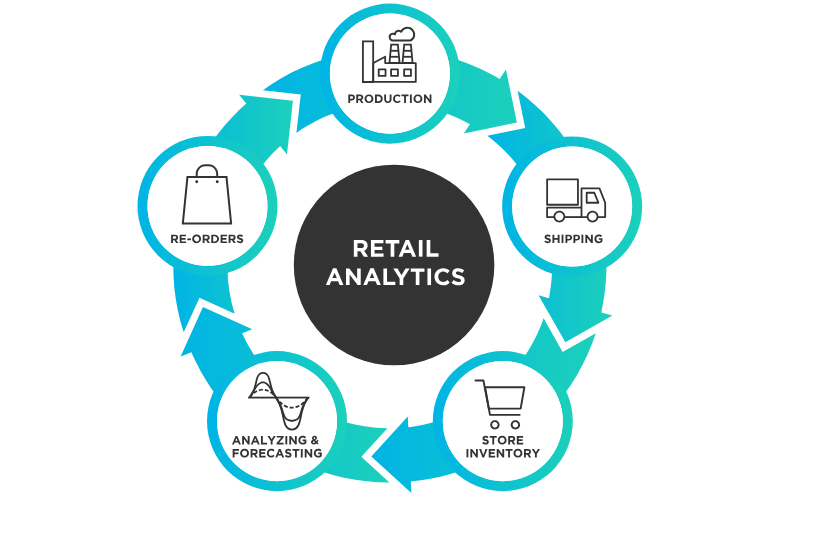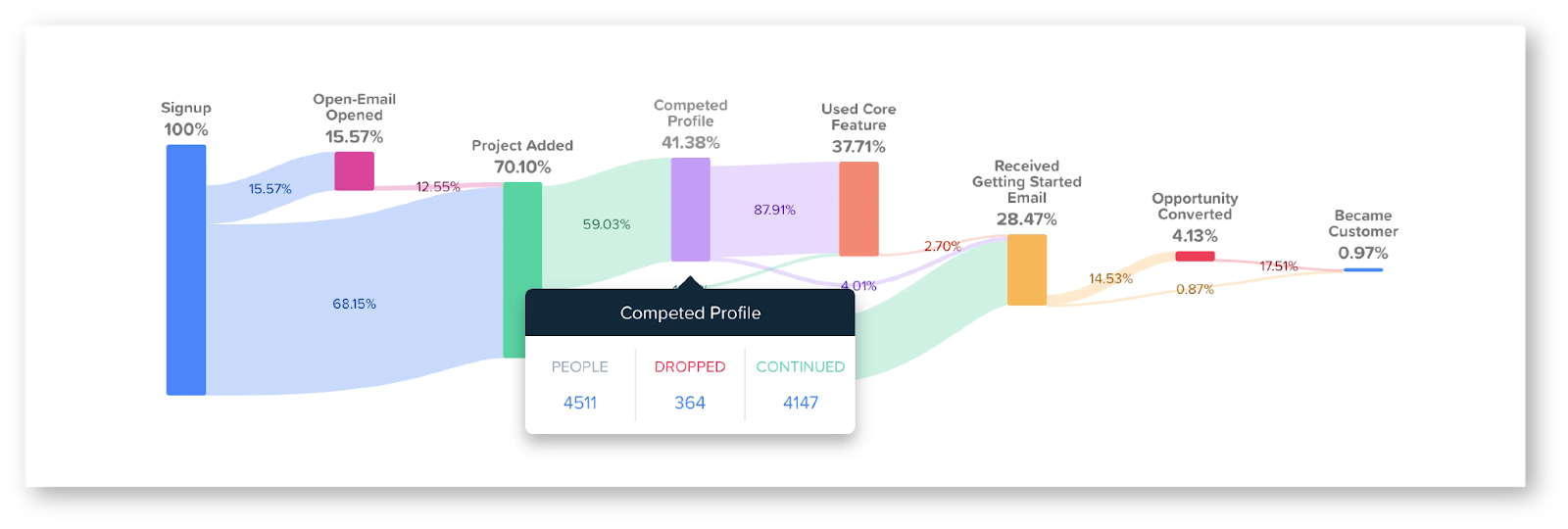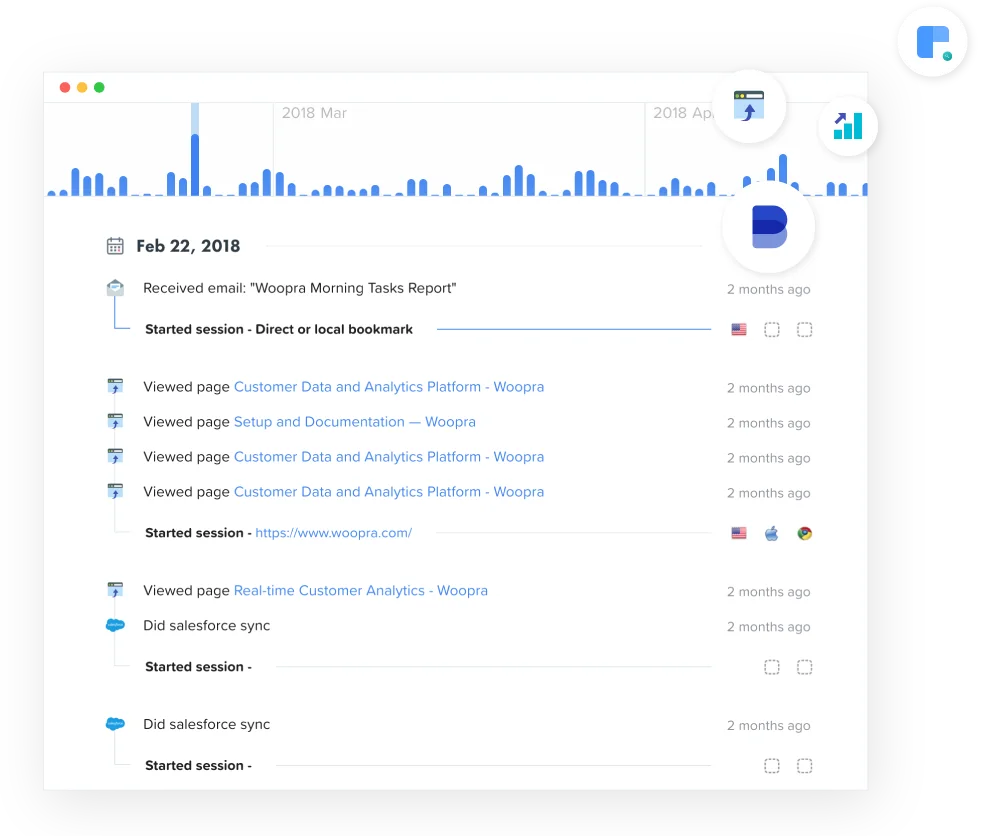Retail marketing analytics is all about using special tools to gather and study lots of data. You can figure out what customers like, how they shop, and what's working well.
We’ll discuss what retail marketing analytics is and how to use it too boost your ecommerce and in-store sales.
The Importance of Retail Analytics in Today's Competitive Market
 Source: Spotfire
Source: Spotfire
Staying ahead in retail means keeping up with changes in what customers want and how the market behaves. Retailers need to change their game plans often to match these shifts. Retail analytics help them do this by showing what's selling, what customers like, and where they might be wasting money.
The world of retail is tough, made even harder by the rise of online shopping. Profit margins are slim, so making mistakes is costly. Using the right data can help businesses make smarter choices. This can mean the difference between clearing out stock and selling at full price.
Thanks to retail analytics, businesses can make choices based on real data, not just guesses. This approach can lead to higher profits and stronger market positions.
 Source: Swipecart
Source: Swipecart
With analytics, sellers can really know their business, from customer favorites to their top spenders. It helps them run smoother operations and smarter marketing.
- Understand the value and number of products sold in an average order
- Recognize which products sell the most and least
- Identify their most valuable customers
- Optimize marketing campaigns for maximum impact
In the era of big data, retail analytics is a must-have for those aiming to lead in retail. It's about using information to make choices that benefit the business and please customers.
By focusing on analytics, businesses can grow, keep customers happy, and increase profits. Those that ignore this tool risk falling behind as the market and shopper trends change.
Understanding the Different Types of Retail Marketing Analytics
To run your retail business smartly, understand the different types of retail marketing analytics. Each type has a unique role, from checking what happened before to predicting what will come and suggesting improvement plans.
With the right tools and techniques, you can get insights to keep your business in front in the competitive retail world.
Descriptive Analytics: Analyzing Past Performance
Descriptive analytics is the first step in diving into your data. It looks at the basic facts from the past, like 'how many' and 'when'. By knowing what's happened before, you can spot trends, see what works, and what needs fixing. This helps understand your customers, sales, and how your business is doing.
Diagnostic Analytics: Identifying the Root Causes of Issues
Diagnostic analytics takes things further by looking at different data to pinpoint problems. It helps to find out why things aren't going as well as they should. With this info, you can fix issues in your supply chain, stop customers from leaving, and make your marketing smarter.
Predictive Analytics: Forecasting Future Trends and Outcomes
Predictive analytics lets you guess what might happen next. It uses many factors to make these predictions, such as the weather or market changes. With tools like machine learning, you can plan better for the future. These strategies can help with setting prices right, meet the demand, and face upcoming challenges.
Prescriptive Analytics: Recommending Next Steps for Optimization
Prescriptive analytics gives you actual advice based on predictions. It's not just about guessing the future; it's about what you can do to get ready for what's coming. For instance, it might suggest special offers to make, handle stock better, or decide how to place products in your stores.
Using all these analytics can give you a complete picture of your retail business. It helps you find ways to grow and make decisions based on solid data. Having the right analytics tools will unlock the power of your data and keep you competitive in the fast-changing retail market.
Key Benefits of Implementing Retail Marketing Analytics
Retail marketing analytics is a big help for businesses to keep up and meet customer needs. It uses data to make operations better, improve customer service, and increase profits. Here are some top benefits of using retail marketing analytics in your business.
Reducing Stockouts and Optimizing Inventory Management
Retail marketing analytics can make your inventory management much smarter. It looks at sales, stock levels, and what customers might buy next. This helps avoid running out of stock or having too much overstock. As a result, you sell more without having to deeply discount products.
Enhancing Personalization and Customer Experience
Through retail marketing analytics, you can get to know what your customers really like. This is done by checking out what they buy and look at, as well as who they are. With this info, you can tailor your offerings to each shopper. For example, suggest items they might love, notify them about new items of interest, or offer deals perfectly suited to them. Such efforts boost customer happiness and outshine your competition.
Improving Pricing Strategies for Maximum Profitability
Getting the price right is key to making more money. Analytics in retail marketing show you the best prices. They consider what others are charging, what customers are ready to pay, and how much your product costs. Using this method, you can set flexible prices that adapt to market changes and meet customer needs. This smart pricing boosts your profits and grows your sales.
Streamlining Product Allocations Across Locations
Retail marketing analytics also optimizes product placement in different places. It looks at local trends, the weather, and customer profiles to put the best stock where it's needed. This boosts customer joy by having their favorite items available and cuts down on moving products too much. As a result, your stores are always ready to meet local demand without overspending.
Retail Marketing Analytics Use Cases and Applications
Retail marketing analytics is a key tool for businesses today. It helps them get ahead in the market. Retailers use customer data to better their marketing, keep customers coming back, and increase sales. Let's explore its uses and benefits:
- In-Store Analytics: Retailers study customer behavior and store traffic. This analysis helps them place products better, manage inventory, and design stores for a better shopping experience. These improvements often lead to higher sales.
- Customer Journey Mapping: With retail marketing analytics, businesses can follow customer interactions. They see how customers move from first contact to after-purchase. This understanding helps in making the customer journey smoother, leading to more loyal customers.
- Personalized Marketing Campaigns: Retailers use customer insights to create campaigns that match each customer's likes and habits. This kind of marketing grabs attention, boosts buying, and keeps customers happy.
- Demand Forecasting and Inventory Optimization: By using predictive analytics, retailers can guess what customers will want. This method helps keep the right amount of stock, avoids empty shelves, and streamlines the supply chain.
- Customer Churn Prevention: Retailers look closely at how customers behave to spot those who might leave. They then offer these customers special deals or support. This keeps more customers around, increasing their lifetime value.
Businesses use special platforms to fully utilize retail marketing analytics. These tools gather and study data from sales, online stores, social media, and customer software.
Using advanced techniques, like machine learning, retailers find new insights and future trends. This knowledge helps them run smarter marketing. The result is better customer service, more loyalty to the brand, and steady growth in the competitive retail scene.
Leveraging Woopra's Analytics Software for e-Commerce and Online Retail
Woopra's analytics tool helps e-commerce businesses understand their customers better. It looks at how customers interact at many points. This analysis helps online stores tweak their strategies to do better.
 Source: Woopra Dashboard
Source: Woopra Dashboard
Tracking Customer Behavior and Preferences
Woopra lets you follow a customer's journey from start to finish. By segmenting customers, you can see who your top customers are. This lets you focus your marketing in a way that makes every customer feel special, increasing loyalty.
Optimizing Marketing Campaigns for Higher Conversions
With Woopra, monitoring the success of your online ads and content becomes simple. You can see what works best and adjust your budget accordingly. This means more effective marketing that wins over more customers.
Identifying Opportunities for Upselling and Cross-selling
 Source: Woopra Dashboard
Source: Woopra Dashboard
Woopra's analytics lets you find new sales chances with existing customers. With the right data, you can find create automations the will suggest products or services your customers might like. This way, you can offer personalized deals that boost your sales.
By using Woopra, online stores can do better with their customers and marketing. It gives insights that lead to smarter choices. These choices can make customers happier, more loyal, and grow your business over time.
How to Get Started with Retail Marketing Analytics in Your Business
Using retail marketing analytics can change your business's game. It helps you make choices based on data to improve your sales and make customers happier. The first step is to figure out your goals.
Then, see where using analytics can help the most, like managing stock, setting prices, or getting customers more involved.
After that, check your data system. Look for any weak spots that might stop you from using data well. Knowing what you need to fix or add can make your analytics work much better.
Picking the best analytics platform is key. Find one with lots of tools, flexibility, and is easy to use. A good example is Woopra. It's made for online sellers, offering tools to understand what customers like, boost marketing, and increase sales.
But, it's not just about the technology. It's also about how your team uses it. Make sure everyone from the top down uses the analytics in their jobs. This will make your business smarter and more competitive.
Getting good at retail marketing analytics is a journey. Keep learning from your analytics, adjust, and stay open to new ideas. This will help your business grow and stand out in the market.
The Future of Retail Marketing Analytics: Emerging Trends and Innovations
Retail is changing fast, and retail marketing analytics is growing quickly too. With technologies like artificial intelligence, machine learning, and predictive analytics, retailers are changing how they understand and use customer data. This shift is key for achieving business success.
Soon, retailers will use the latest tools to study a lot of data quickly. This will help uncover hidden trends and patterns, and improve their customer experience. They will also use IoT devices for more precise data on store designs, where to place products, and staff needs.
As the market for retail analytics grows, companies must keep up with privacy laws. They need to use data for growth and innovation while being clear and secure with customer data. Using prescriptive analytics and other advanced tools can create new chances for success. This is how retailers can keep up in a world driven by data.


